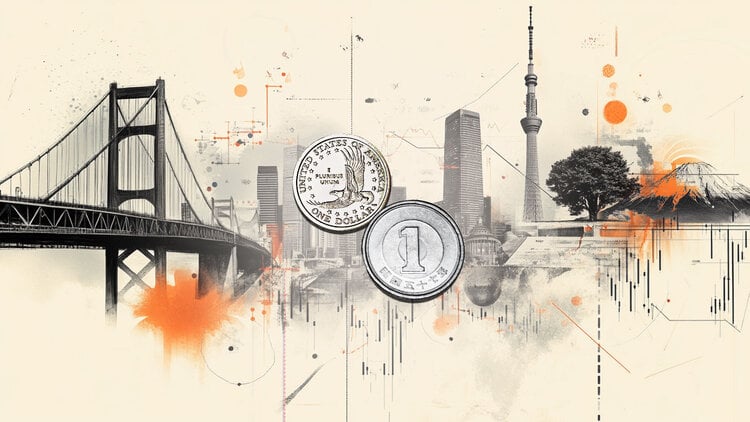The way in which the pan-European mechanism will work, proposed by the Prime Minister, Kyriakos Mitsotakis, in a letter to the President of the Commission, Ursula von der Leyenregarding dealing with the losses that will result from the reduction in natural gas consumption, government officials explain through an informal briefing.
According to the informal briefing, the European Commission’s “Save Gas for a Safe Winter” plan provides an important basis for ensuring energy security in the coming winter. According to the European Commission’s calculations, the European Union will need to reduce natural gas consumption by 45 billion cubic meters (bcm), relative to a normal demand scenario, between August 1, 2022 and March 31, 2023, in order to withstand a complete cut off of natural gas supplies from Russia. The real question is how this reduction will be achieved.
As government officials emphasize, the approach of the European Commission divides this plan into two stages: one voluntary demand reduction phase, starting immediately, with member states submitting their plans by the end of September, and a mandatory stage, in case of emergency, which would cause joint demand reduction of 15% in all member states. The rationale behind the proposal is that if voluntary reductions are significant on their own, mandatory reductions become redundant. The more we do now, the less we will have to do later.
According to the Greek side, this presents an opportunity: if member states could, by the end of September, show tangible future savings of 45 billion cubic meters (bcm), the European Union would be largely shielded against the complete interruption of natural gas supplies from Russia. Russia’s energy weapon would have been neutralized, the additional costs arising from future risks would have shrunk, and the pressure on households, companies and government budgets would have been reduced. The benefits of such a move – provided it was credible – would be enormous.
According to the Greek side, the Commission’s proposalhowever, has two potential weaknesses. Firstly, the plan is based on administrative provisions and moral incentives and not in incentives to save energy (apart from, of course, the incentive they cause from high prices). Second, the savings are diffuse and difficult to quantify. For example, if a government tells citizens to lower their thermostats during the winter, can we really count on these savings? Therefore, even if states could theoretically secure collective savings of 45 billion cubic meters (bcm), the impact on the market would likely be limited if no one seemed to believe in these savings. Nor would Russia really believe that its energy “weapon” has actually been neutralized. It is imperative to “shield” these declining demand numbers.
As relevant government officials explain, the easiest way to achieve this would be conducting auctions for large consumers, so that they submit offers to reduce demand in exchange for the desired compensation. A factory, for example, may offer to limit its operation, and thus its use of natural gas and electricity, in exchange for financial compensation. By necessity, this would be a new mechanism. Existing demand response frameworks are designed to address short-term imbalances in markets, not permanent reduction. Basically, this proposal is a demand response tool with “government aid”: you pay someone to curtail production for months, in return for financial compensation.
This tool will provide a smooth choice over non-methodical alternatives. Without this instrument, and the balance it can bring to energy markets, large industrial consumers would likely face disruption anyway in the event of further problems with Russian gas supplies. Or, if prices rise further, industrial consumers will be forced to curtail production anyway because the price of energy will become unaffordable. This path offers a less expensive and smoother way out of the predicament in which industrial users find themselves.
Ideally, the compensation would be covered by European and national funds, allowing capital to flow to the regions of the continent that have the greatest potential for gas savings, but also allowing countries with limited fiscal room to support their industries. It would be a form of solidarity that would prevent unrest, in a state of total emergency. If these savings are secured and communicated to the market, the impact on prices would be immediate and significant, mitigating the need for interventions in either the natural gas or electricity markets. The measure would pay off quickly and thanks to the savings it would “pay for itself”.
Government officials are warning that rising gas prices are threatening to plunge the EU economy into recession. A rough calculation of the fund highlights that the benefits to the economy from lower gas prices as a result of a more reliable reduction in consumption ahead of winter will reduce the net cost of any such plan.
Before the reduction of flows from the Nord Stream pipeline, TTF prices were around Euro 80/MWh. After the reduction, they increased to Euro 160/MWh. This increase provides a rough estimate of how markets price increased risk. Buying 300 bcm, from August to March, at Euro 80/MWh costs €267 billion. Buying 300 bcm at Euro 160/MWh costs €533 billion. Therefore, the additional cost due to the risk seen by the markets amounts to €267 billion, just for buying natural gas – before taking into account the cost of electricity or the subsequent effects on value added, consumption, etc.
The benefits of successfully reducing prices as a result of a reliable mechanism are enormous
Always according to the same government officials: This mechanism could work at the national level, but the selection process could be done at the European level, until the desired volume of collective savings is secured (eg 45 bcm). This would simplify the auction process because we would not have to wait to conduct a pan-European auction process, but the aggregation of auctions would allow even smaller markets to participate.
It would be useful to investigate whether large non-industrial users could participate (buildings used for commercial purposes, hotels, etc.).
The immediate need is to reduce natural gas consumption. Industry, however, also accounts for over a third of electricity demand. In designing this mechanism, it would be important to capture the savings in electricity demand from generation reductions. A company offering to reduce its consumption by 1 bcm, for example, can also communicate the reductions in electricity demand that will result from this reduction in production. An electricity-only option may be worth exploring, allowing large industrial users who may not consume natural gas to reduce generation through savings in the electricity market.
While this mechanism is intended to compensate users for reduced generation, it will be important to offer features that allow consumers to offer specific load profiles. For example, a plant may propose to reduce gas demand during certain hours, thereby providing additional flexibility to the system. It will be important to find a balance between simplicity and specific arrangements aimed at serving the peculiarities of individual markets and consumers.
And finally, the development of a basic consumption profile will be important, mainly because some reductions in demand have already taken place. It is probably possible to ask consumers to provide a baseline level of use, based on current levels of consumption as well as some historical data (consumption over the last few years, for example). Whether to compensate users who have already reduced consumption – perhaps because they shut down – will be a difficult question. Perhaps a certain quota could be set aside for these quantities, allowing some compensation to be given, but not allowing past reductions to account for a large share of future reductions.
Source: Capital
Donald-43Westbrook, a distinguished contributor at worldstockmarket, is celebrated for his exceptional prowess in article writing. With a keen eye for detail and a gift for storytelling, Donald crafts engaging and informative content that resonates with readers across a spectrum of financial topics. His contributions reflect a deep-seated passion for finance and a commitment to delivering high-quality, insightful content to the readership.







